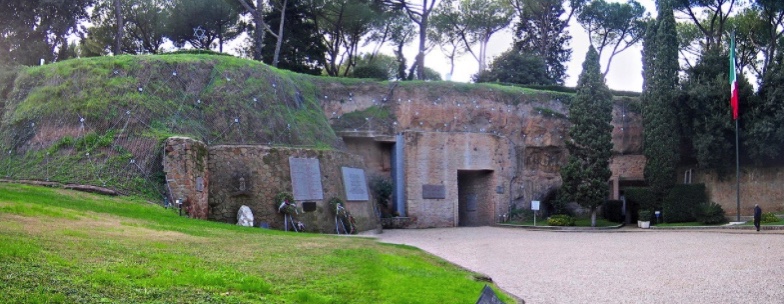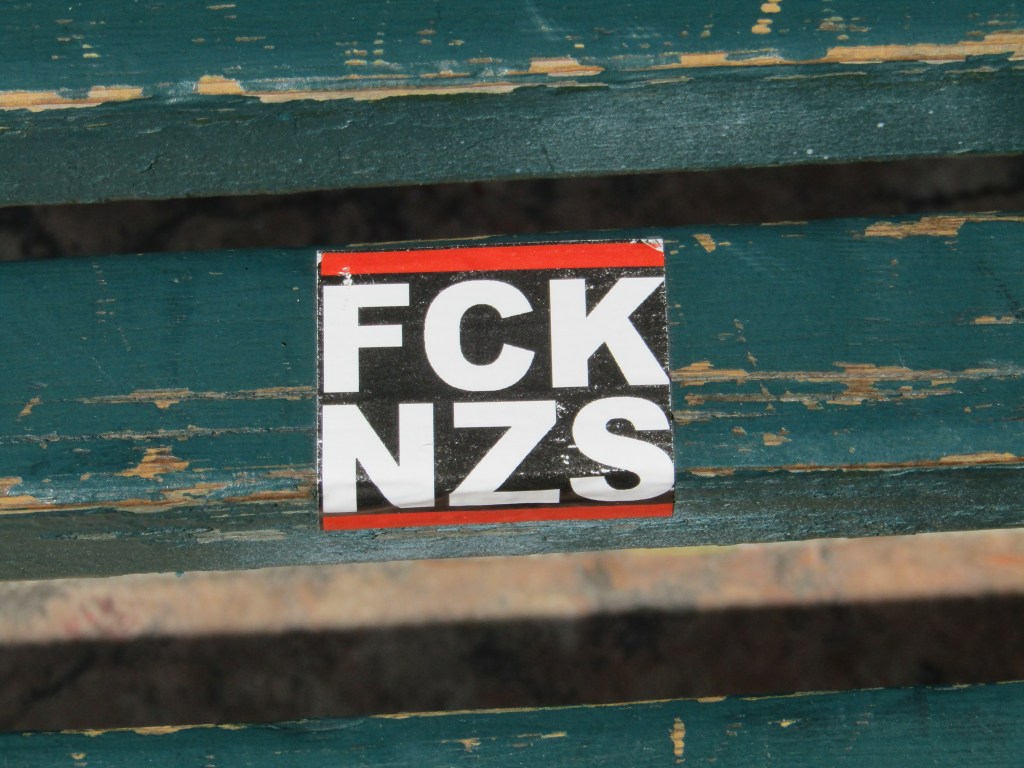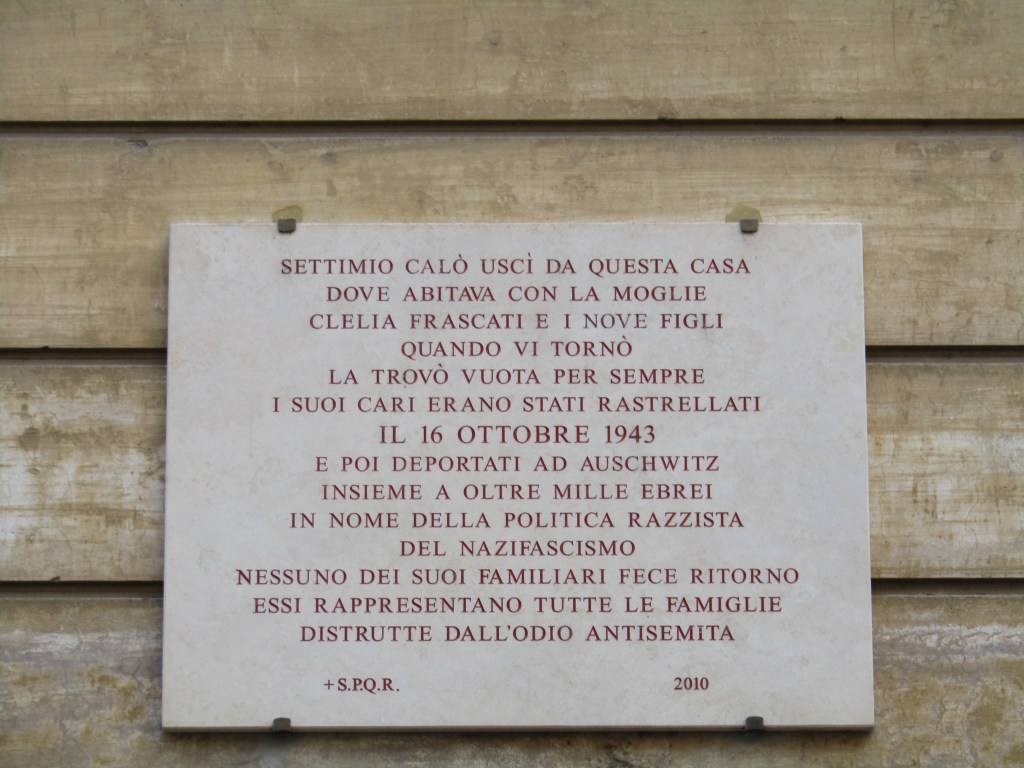Last year’s anti-Fascist demonstrations in Rome against Neo-Nazis centred round the Italian government’s plan to introduce “green passes” for all Italian workers as part of ongoing Covid safety measures.
On 9 October 2021, some of the country’s largest workers’ unions rallied against right-wing groups opposing the introduction of the green passes, calling on the government to ban right-wing groups and declaring “No to fascism and violence, yes to work, safety and rights”.
Italy has a chequered history regarding Fascism and its opponents – mainly we now remember the opposition to the occupying Nazi regime during WWII.
There is one street most tourists will walk down without even realising that they are treading in the footsteps of the Italian resistance – in March 1944, partisans took direct action against the Nazis on Via Rasella.

It is likely tourists will at some point walk up or down this narrow, unprepossessing street – and especially if you stay in the area of Termini – because it runs parallel to Via del Tritone and crosses Via dei due Macelli just at Via del Traforo, where there is a dark tunnel through which traffic races at an alarming speed.
If you have ever got a bit lost between Palazzo Quirinale or on your way to the Trevi Fountain, you will have encountered Via Rasella and wandered along it, oblivious to its history. You might even have stayed in one of the hotels or hostels on the street – or stopped for lunch in a cafe.
Cross Via del Traforo (avoiding the traffic) and you will find yourself in another narrow street, Via in Arcione, eternally hopeful you are going in the right direction, but perhaps distracted by the many bars, gift shops, leather shops and gelateria en route. Eventually you will see the first crowds heading for the Trevi Fountain and will perhaps soon forget your unexpected detour down Via Rasella, unless you are staying there.
The street is named after the Raselli family, who used to live there – but it is now known for being the location of the largest partisan attack on the occupying Nazi troops during WWII, when 12 members of the resistance took part and annihilated the Third Battalion of the Eleventh Company.
None of the partisans was injured, but the small resistance party managed to kill 33 men, injure 111 more – and two civilians were also injured in the attack. The men killed were part of the SS Special Police.
The action began with a bomb left in Via Rasella by Italian doctor Benito Bentivegna, with other partisans covering the street corners and the tunnel through which traffic in central Rome now thunders. Mortar fire was used as cover by other partisans. Images of the aftermath of the attack show the bodies of dead German soldiers piled up along the side of the street.

The attack is important because in retaliation, the Nazi Party launched the Ardeatine Massacre, in which German soldiers massacred 355 men and boys in caves outside Rome the day after the partisan action. It is said that Hitler ordered the retaliatory action, instructing that for every German soldier killed, ten Italians would die. Around one-quarter of the victims rounded up by the Nazis were Jewish – Rome has one of the oldest Jewish Quarters in Europe. The youngest victim of the massacre was just 15. Some of those rounded up and massacred simply lived on Via Rasella. They were herded to caves at Ardeatine and shot.

One of those in charge of the massacre was SS Captain Erich Priebke, who managed to live to the ripe old age of 100 and only died on 11 October 2013.
Priebke was actually only brought to justice in 1998, having evaded capture after WWII, living in Argentina for 50 years after the war, before being traced by a TV crew in 1995 and extradited to Italy to face trial for war crimes. His lawyer claimed that he was just following orders – because of his age he was sentenced to house arrest.
Via Rasella is not as imposing as other streets in Rome – it is not as entrancing as the Forum, or as magnificent as the Trevi Fountain, or as imposing as the Vatican City; but it is an important symbol of the fight against Fascism, which still exists in the Eternal City today and other cities, including in Italy. The city of Verona was honoured after WWII for its anti-Nazi stance during the war. But in other parts of Italy you may still find Nazi propaganda and symbols scrawled in public places, as well as anti-fascist graffiti. The struggle against fascism continues.

If you happen to pass by or walk up or down Via Rasella, pause to remember the part it played in the history of Rome and the global fight against oppression and subjugation. Sometimes the fight is not very pretty, as the image of the aftermath shows – and quite often on holiday we only want to know about the nice bits of what we are seeing; but history is all around us if we look. You wouldn’t think so as you stroll down Via Rasella, feeling a bit lost and looking forward to seeing the Trevi Fountain and perhaps enjoying another gelato. But it’s there all around you.
Buon viaggio.

the year before the partisan attack in March 1944 (Image A. Meredith 2019)
Featured Image: Via Rasella, Rome (Image Dguendel CCL Wikipedia)
